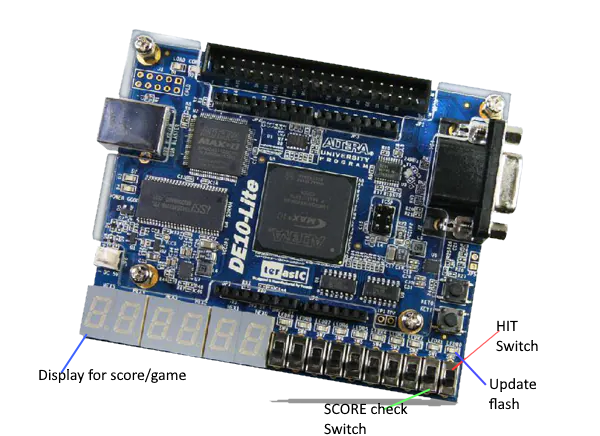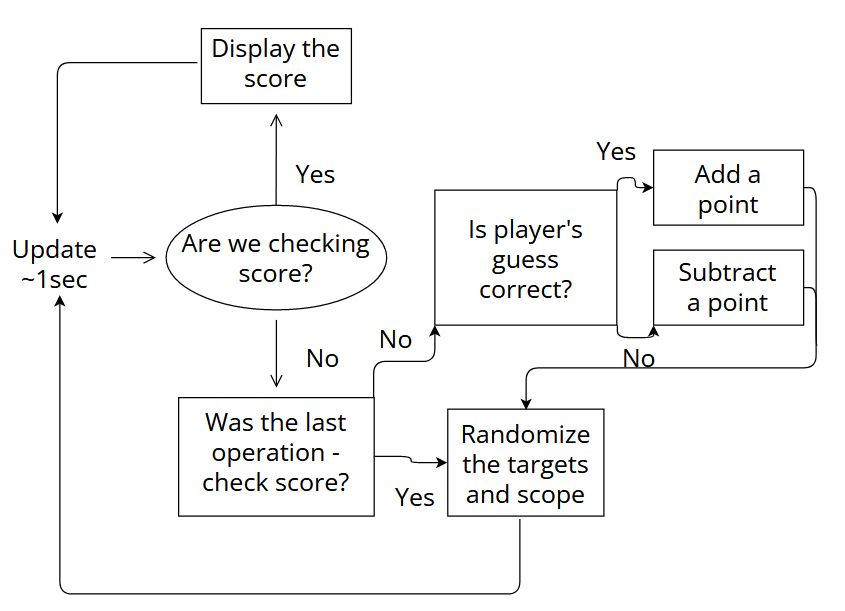Author
Bahdan Shakh (b.shakh@innopolis.university)
Introduction
Games can give positive emotions and provide relaxation to a person. However, the main purpose of my project is to get a better understanding of the Verilog language. In addition, coding a game into FPGA will help to define the bounds of this programming language.
Hardware and software used:
MAX 10 FPGA (and it's power cable)
7-Segment display (output device)
Switches (input device)
Quartus Prime Lite Edition 18.1
Verilog/SystemVerilog HDL
Altera USB Blaster (USB Blaster transfers configuration data from PC to FPGA)
Project description
The game itself is a simple clicker game: a moving aiming point, represented by the DP led on a 7-segment display, a target, which is represented by a vertical line and an empty space, which consists of only the bottom line. At each second, the player is expected to determine whether the space inside of their aim represents a target or an empty space and move the switch into position 1 or 0 accordingly. After the second passes, FPGA checks if the player's choice is correct and makes a decision based of player's action. If the guess of a player is correct, game adds one point to their score, and subtracts one in other case.
Game also features a pause menu, which is used to stop the game and view the score. Pause menu can be turned on and off via a switch.
Location of points of interest on the board

Schematic representation of the program

Project flow
As predicted in the draft of the project (sent via email to TAs), one of the main problems was the lack of knowledge on operating 7-segment displays. However, while this problem only took a relatively small amount of time and documentation read, randomization was a much tougher problem. I decided to use random numbers in my game due to it being objectively boring and easy for a project. As such, I considered a few approaches to the pseudo-randomization, which I will briefly describe:
Mathematical operations on a set number
Pros: Does provide random values, relatively easy to make
Cons: The set of values will remain the same with each new launchMathematical operations on an outside number from a sensor
Pros: Provides almost truly random values, does not repeat with new launch
Cons: Requires additional gadgets/sensors (e.g. temperature)Mathematical operations on an outside number from a user
Pros: Provides almost truly random values, does not repeat with new launch
Cons: Gets stuck in a loop if user does not input anythingMathematical operations on an outside number from a user with additional module for randomization on a set number (1) (chosen)
Pros: Provides almost truly random values, does not repeat with new launch, provides new value with each update
Cons: Not found yet
Conclusion
I described the key stages that I went through to implement a clicker game using an FPGA board, Quartus Prime software and Verilog hardware description language. This work has been implemented in the scope of «Computer Architecture» course in the Innopolis University.